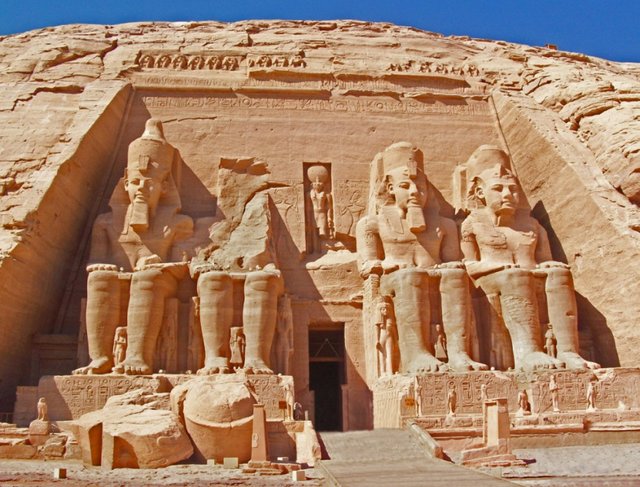The New Kingdom of Ancient Egypt

During the Second Intermediate Period (1650–1550 BC), Egypt was weakened by the immigration of the Hyksos people from the east. They established a dynasty in Lower Egypt and the Nile Delta, keeping the Nile Valley divided for several centuries until Ahmose I was finally able to establish the 18th dynasty that ruled over all of Egypt, beginning the New Kingdom period in 1550 BC.
During the New Kingdom (1550-1069 BC), Egypt reached new heights of power and wealth. The territory ruled by the pharaohs expanded into new frontiers in the south, west, and east and the kings of Egypt built temples and palaces that were unrivaled by any in the world up until that point in history and well after it. Territorial expansion during the 18th dynasty was a response to the threats that had weakened Egypt in the past. During the Second Intermediate Period, different kingdoms had successfully invaded Egypt from the south and the east, weakening the region economically.
In response, the New Kingdom pharaohs sought to establish territorial buffers to prevent future invasions. The result was an empire stretched from Syria and the way south into modern day Sudan and Ethiopia at its greatest extent, opening up new trade opportunities and resulting in an economy that allowed for a focus on the arts and building like never before.
The New Kingdom produced Egypt’s most famous pharaohs, including Hatshepsut, Thutmose III, Akhenaten, Tutankhamun, and Ramesses II. The archeological and historical legacies of these powerful leaders are incomparable with those of all of the earlier kings of Egypt with the exception of those from the 4yth dynasty, the builders of the great pyramids.
Hatshepsut and Ramesses II especially were prolific builders. Many of the famous archeological sites that tourists visit today around Luxor (the site of their ancient capital of Thebes) are credited to these two pharaohs or the descendents of Ramesses.
Book one of our Egypt Tours to Know more about Egypt History.
Hey there @luxorandaswan, welcome to STEEM. If you join @schoolofminnows, you can receive votes for free.
1. Your post will appear in post-promotion on the discord.
2. Your posts will also get featured on the school of minnows account on steem
https://steemit.com/@schoolofminnows
3. You get votes from other members.
4. The whole thing is FREE.
To join follow this link:
https://steem.host/connect/steempunks
https://www.luxorandaswan.com/en/
During the Second Intermediate Period (1650–1550 BC), Egypt was weakened by the immigration of the Hyksos people from the east. They established a dynasty in Lower Egypt and the Nile Delta, keeping the Nile Valley divided for several centuries until Ahmose I was finally able to establish the 18th dynasty that ruled over all of Egypt, beginning the New Kingdom period in 1550 BC.
During the New Kingdom (1550-1069 BC), Egypt reached new heights of power and wealth. The territory ruled by the pharaohs expanded into new frontiers in the south, west, and east and the kings of Egypt built temples and palaces that were unrivaled by any in the world up until that point in history and well after it. Territorial expansion during the 18th dynasty was a response to the threats that had weakened Egypt in the past. During the Second Intermediate Period, different kingdoms had successfully invaded Egypt from the south and the east, weakening the region economically.
In response, the New Kingdom pharaohs sought to establish territorial buffers to prevent future invasions. The result was an empire stretched from Syria and the way south into modern day Sudan and Ethiopia at its greatest extent, opening up new trade opportunities and resulting in an economy that allowed for a focus on the arts and building like never before.
The New Kingdom produced Egypt’s most famous pharaohs, including Hatshepsut, Thutmose III, Akhenaten, Tutankhamun, and Ramesses II. The archeological and historical legacies of these powerful leaders are incomparable with those of all of the earlier kings of Egypt with the exception of those from the 4yth dynasty, the builders of the great pyramids.
Hatshepsut and Ramesses II especially were prolific builders. Many of the famous archeological sites that tourists visit today around Luxor (the site of their ancient capital of Thebes) are credited to these two pharaohs or the descendents of Ramesses.
Book one of our Egypt Tours to Know more about Egypt History.